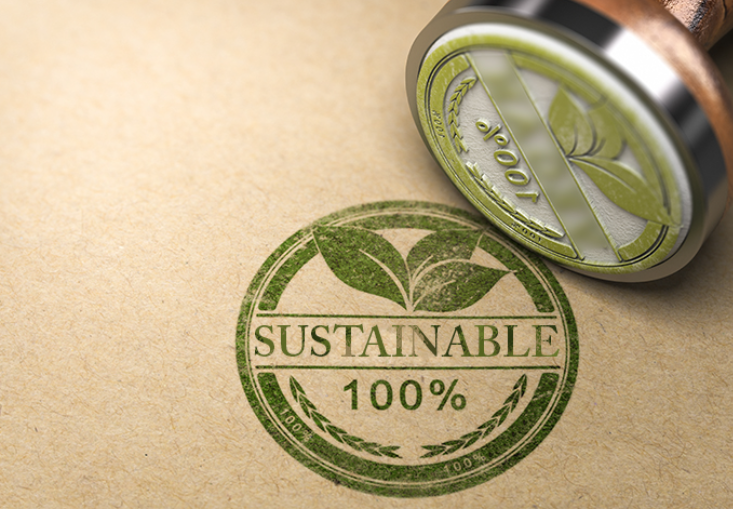How Is Sustainable Labelling Eco-Friendly and Making the Earth Greener?
Have you ever looked closely at the little tags sewn into your clothes? They might seem insignificant, but those sustainable labels actually play a surprising role in making our planet greener! Let’s dive into the world of eco-friendly sustainable labels and see how they contribute to a healthier Earth.
The Problem With Traditional Labels
Before we explore the eco-friendly options, let’s understand the environmental impact of traditional labels. Most are made from synthetic materials like nylon or polyester, derived from fossil fuels. Producing these materials uses a lot of energy and resources, contributing to greenhouse gas emissions and climate change. Additionally, traditional labels often end up in landfills after the clothing is discarded, taking hundreds of years to decompose.
The Green Revolution Of Labels
Thankfully, the world of labels is undergoing a green revolution! Several eco-friendly alternatives are gaining popularity, offering more sustainable choices for clothing manufacturers and a greener future for our planet.
Recycled Materials
One way to make labels eco-friendly is to use recycled materials. Imagine giving plastic bottles or old clothes a second life as labels! Recycled materials significantly reduce the need for virgin resources, saving energy and minimizing waste. Look for labels made from recycled polyester, cotton, or even paper!
Organic Materials
Another green option is using organic materials like organic cotton or hemp. These materials are grown without harmful chemicals, including pesticides or fertilizers, promoting soil health and biodiversity. They’re also naturally biodegradable, decomposing quickly when discarded, returning valuable nutrients to the earth.
Tyvek Labels
Tyvek is a unique material made from high-density polyethylene fibers. While it might sound like traditional plastic, Tyvek labels are surprisingly eco-friendly, extremely durable, water-resistant, and tear-proof, lasting the entire lifespan of the garment. This reduces the need for frequent replacements, as a result, minimizing waste. Additionally, Tyvek is recyclable, further reducing its environmental impact.
Digital Printing
Traditional label printing often involves harsh chemicals and dyes. Digital printing technology offers a greener alternative. It uses less water, eliminates the need for harmful chemicals, and produces minimal waste. This translates to a smaller environmental footprint for the entire labeling process.
Biodegradable Labels
These innovative labels are made from natural materials like corn starch or cellulose, derived from plants. When discarded, they decompose quickly and naturally, leaving no harmful residues behind. Biodegradable labels are a fantastic option for clothing meant for short-term use, like disposable garments or event t-shirts.
Water Conservation
Traditional cotton production is notoriously water-intensive. By using recycled materials or organic alternatives like hemp, which requires significantly less water to grow, labels can indirectly contribute to water conservation efforts.
Reduced Chemical Use
The production and printing of traditional labels often involve harsh chemicals, resulting in polluting waterways and harming ecosystems. Eco-friendly labels, on the other hand, minimize or eliminate the use of these harmful chemicals, protecting our environment and the health of workers involved in the production process.
Renewable Energy Sources
Several companies are now focusing on using renewable energy sources, like wind or solar power, for affordable and greener earth to power their manufacturing facilities, including those producing eco-friendly labels. This transition away from fossil fuels significantly reduces greenhouse gas emissions and helping and combating the climate change.
Increased Transparency
Eco-friendly labels often come with additional information printed on them. This can include details about the recycled content, organic materials used, or certifications earned by the manufacturer. This transparency helping the consumers to make decisions and holds brands accountable for their sustainability practices.
Raising Awareness
The presence of eco-friendly labels on clothing serves as a constant reminder of the importance of sustainability. By seeing these labels, consumers are more likely to become aware of the environmental impact of fashion choices and actively seek out sustainable alternatives. This can lead to a positive shift in consumer behavior and increased demand for eco-friendly products, encouraging the fashion industry to prioritize sustainability.
Beyond The Labelling
While eco-friendly labelling is a great step towards a greener fashion industry, here are some additional things we can do as individuals to make a difference:
Buy Less, Choose Well
Resist impulse purchases and invest in high-quality, durable clothing that will last longer.
Extend The Life Of Your Clothes
Properly care for your clothing products by following washing instructions and repairing minor damages instead of discarding them immediately.
Shop Secondhand
Consider buying pre-owned clothing to give garments a second life and reduce the demand for new production.
Support Sustainable Brands
Look for brands that are transparent about their sustainability efforts and actively choose clothing made with eco-friendly materials and processes. By supporting sustainable practices and making informed choices about sustainable practices, we can all make the fashion industry greener and contribute to a healthier planet for ourselves and future generations. Remember, smallest actions can have a noticable effect, and choosing eco-friendly sustainable labels is a simple yet impactful step towards a greener future.
Custom Labels With A Green Conscience
Many companies now offer sustainable custom fabric labels made with eco-friendly materials and printing processes. When choosing clothes, look for brands that prioritize sustainability and transparency. You can often find information about their eco-friendly practices on their websites or tags. By supporting these brands, you’re not just making a fashion statement, but also conveying a powerful message about the importance of environmental responsibility.
Conclusion
Eco-friendly labels, though small, can have a significant impact on the environment. Choosing clothes with eco-friendly labels is a simple yet impactful way to contribute to a greener future. As consumers, we have the power to make informed choices and encourage sustainable practices in the fashion industry. So, the next time you shop for clothes, remember to look for those little green labels – they’re not just about information; they’re about making a positive difference for our planet!
